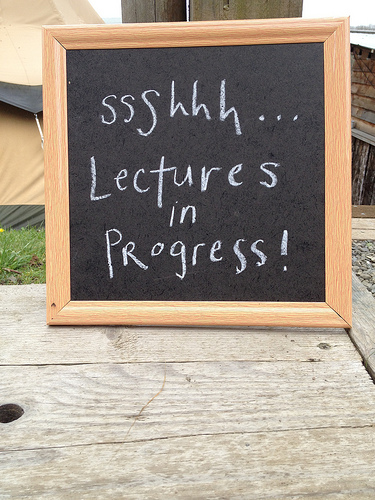How can we promote and manage active learning during lectures? How can we measure student understanding and make sure that students are engaging with material?
In 1972, Donald Bligh (1) undertook an extensive study on the use of the lecture as an educational format. He found that it was effective but not more effective than other methods used for transmitting information and that it is relatively ineffective for many other aspects of education including the promotion of higher order thinking. Bligh also observed that concentration levels of students typically drop after 10 – 15 minutes of passively listening to a lecture. Since these studies took place, technology has provided us with an increasingly sophisticated, interactive and accessible range of formats for transmitting information and facilitating active learning. This article looks at a few tried and tested strategies for using technology to enhance learning for teaching large groups of students.

flickr photo by Samantha_Bell https://flickr.com/photos/samanthabell/8737957816 shared under a Creative Commons (BY) license
The ‘flipped’ classroom
This model changes the dynamic of learning and teaching to enable more active learning and can be applied to both small and large group teaching across a range of disciplines. The basic premise of this model is that pre-class independent study is typically focussed on transmission of knowledge, whilst time in class is spent on active learning to provide opportunities to apply concepts and reinforce understanding. This approach is commonly used in conjunction with the peer-instruction and team-based learning methods mentioned in this article. 7 things you should know about flipped classroom provides a useful introductory guide.
We have recently set-up a flipped learning group for staff at University of Sussex, please see our webpages for details if you would like to be involved. Read more ›








 One of the greatest pleasures of a new colleague is the new ideas and ways of thinking that they bring to a team.
One of the greatest pleasures of a new colleague is the new ideas and ways of thinking that they bring to a team. 